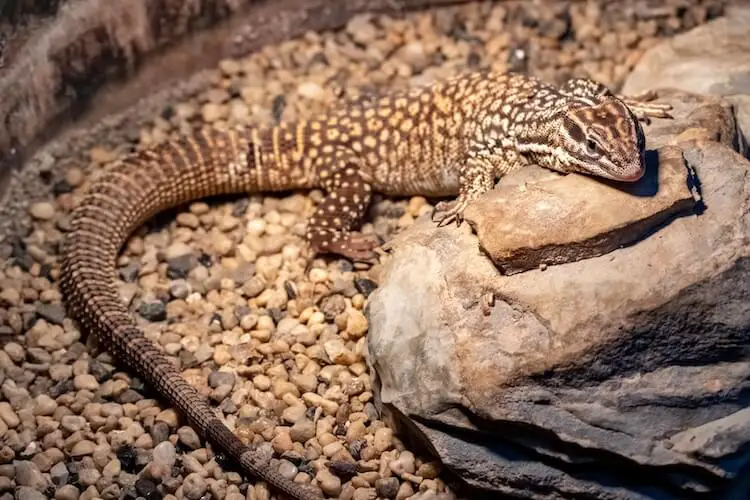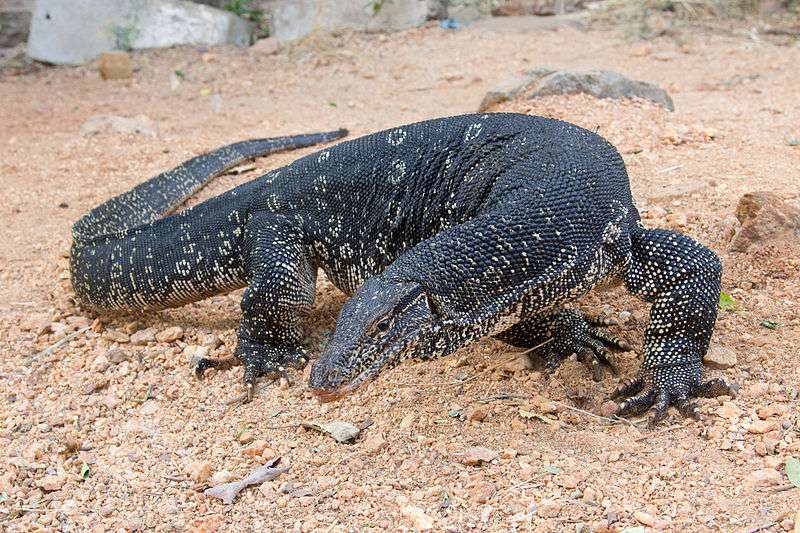
Description
Scientific name: Varanus indicus
Life span: up to 20 years
The Mangrove Monitor is a big lizard that may grow to be around 4 feet long. Its teeth are serrated and it has a distinctive dark purple tongue. They have a characteristic “monitor look,” with a long neck, a large head, strong legs, and pointed claws. Additionally, they have a powerful tail that they employ to aid in swimming. The lizard’s background color is dark brown, black, or very dark green. From the top of the monitor’s head to its tail, its body is adorned in small dots of golden or yellow color. The dots’ size and intensity might differ substantially from individual to individual. The tail of the monitor accounts for almost two-thirds of its entire length and is laterally compressed.
Native Region/Habitat
Mangrove monitors are found in woods, wetlands, and mangroves (tropical plants found near water, usually salt water) along lakes and rivers in New Guinea, the Solomon Islands, northern Australia, and other Pacific Islands.

Behavior
It is an opportunistic carnivore that eats fish, carrion, mollusks, rodents, insects, crabs, tiny lizards, and eggs from reptiles and birds. The only monitor species that can capture fish in deep water is the mangrove monitor. It is reported to consume young crocodiles in some regions of its habitat.
These monitors are solitary creatures that prefer to be left alone. It spends hours sunbathing, climbing, or hiding, thus these are activities you should be aware of if you own one. A monitor won’t think twice about biting or scratching severely if it feels threatened or afraid. Monitors will even strike back with their tails. These monitors are pretty fast, so you might be targeted before you know what’s going on.
Mangrove monitors dislike being handled. They may be quite harmful and should only be handled when absolutely necessary. Even if you have experience caring for reptiles, you should exercise extreme caution while touching them. Your mangrove monitor could put up with you if you’re patient, but you can never predict how it’ll respond from minute to minute.
Care As a pet/In captivity
Consider a vast area while creating a mangrove monitor cage. Larger enclosures are preferable since mangrove monitors require a lot of areas. A minimum enclosure size of 6 x 5 x 4 ft is recommended. Again, it would be fantastic if the enclosure could be larger. A lot of enclosure enhancements should be included, like branches for climbing and sunbathing and sizable reptile hides for resting. In order to maintain the health of the lizard, keep the lighting steady in the mangrove monitor’s enclosure.
A mangrove monitor’s enclosure should generally maintain a constant temperature of between 82°F – 90°F. Using standard reptile heating lights, raise the temperature surrounding the basking area to approximately 95°F or 97°F. Water is essential for mangrove monitors. They like soaking in it, drinking from it, and playing in it. Enclosure humidity levels can be controlled by having enough water, and giving the animals a good soak in water will aid in proper shedding.
Table





